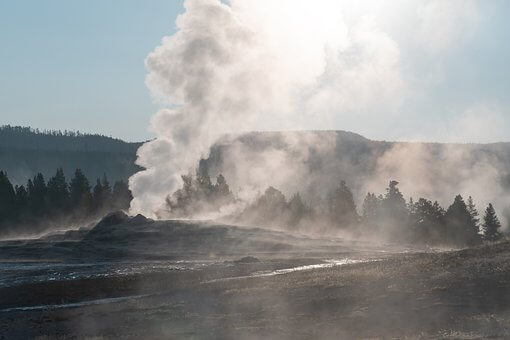Key Points:
- Dr. Domenico Vicinanza will turn real-time seismic activity from Yellowstone National Park into music.
- Vicinanza is a Senior Lecturer at Anglia Ruskin University in Cambridge, England and a leading expert in data sonification.
- The music will be produced live on stage with the help of a computer programme that will map the seismographic data to musical notes.
Are you ready for some seismic sound? Dr. Domenico Vicinanza is an expert in data sonification and he will perform a live musical interpretation of seismic activity at Yellowstone National Park. During the 2023 Internet2 Community Exchange conference in Atlanta, Vicinanza will convert live geophysical data into music using a computer programme that maps the seismographic data to musical notes. Dr Alyssa Schwartz, Visiting Assistant Professor of Flute and Musicology at Fairmont State University, will be the musician bringing the music to life.
Yellowstone is one of the most seismically active areas of the United States, so this musical performance is bound to be unique. Earthquakes at Yellowstone often occur in “swarms,” which means many earthquakes can happen in a short period of time. Vicinanza’s programme will convert the data to musical notes in real-time, so the music created will depend on the seismic activity recorded at that time.
Vicinanza said, “We have absolutely no idea how the music will turn out. Using my programme, I’ll be converting the data to musical notes and if there’s significant seismic activity and big spikes in the data we’re receiving at that time, the music will be incredibly dramatic. Equally, it could be quite serene, so it’s a huge artistic challenge for Alyssa to interpret, and it’s really Alyssa who will be taking all the risks.”
Vicinanza’s ongoing work with Yellowstone National Park is the first time the US National Parks Service has recognised music as a research output. The aim of this project is to bring the power of nature to life and help more people experience the natural wonders of Yellowstone. Vicinanza believes music and sound can be a useful way of experiencing science, as our ears are much more sensitive to small changes than our eyes.
Vicinanza added, “Every pattern, spike, or sudden change in the music is a direct representation of what is happening at that spot in Yellowstone at that time. Rather than just looking at a seismograph, we can listen to it, and that’s an incredible thing.” This performance is a new way to experience the natural phenomena and the power of the earth through the magic of music.


